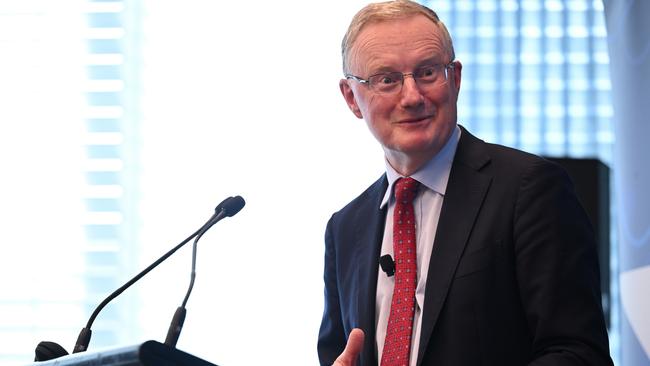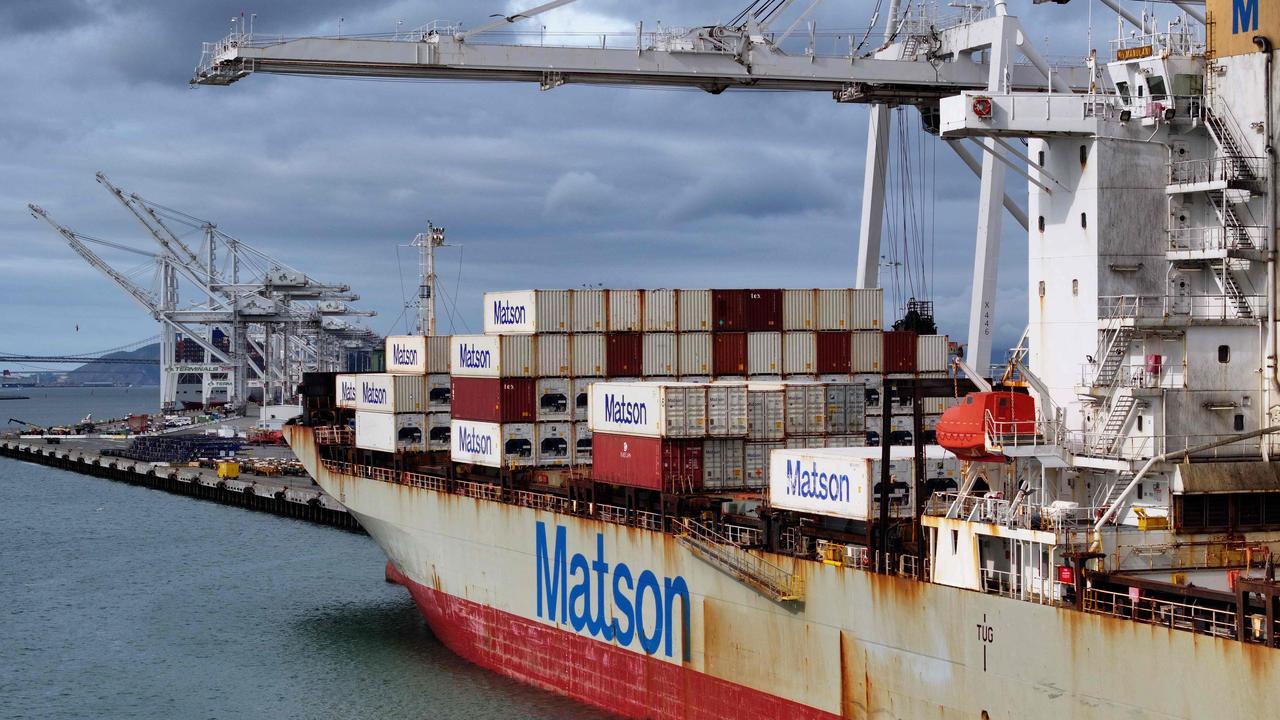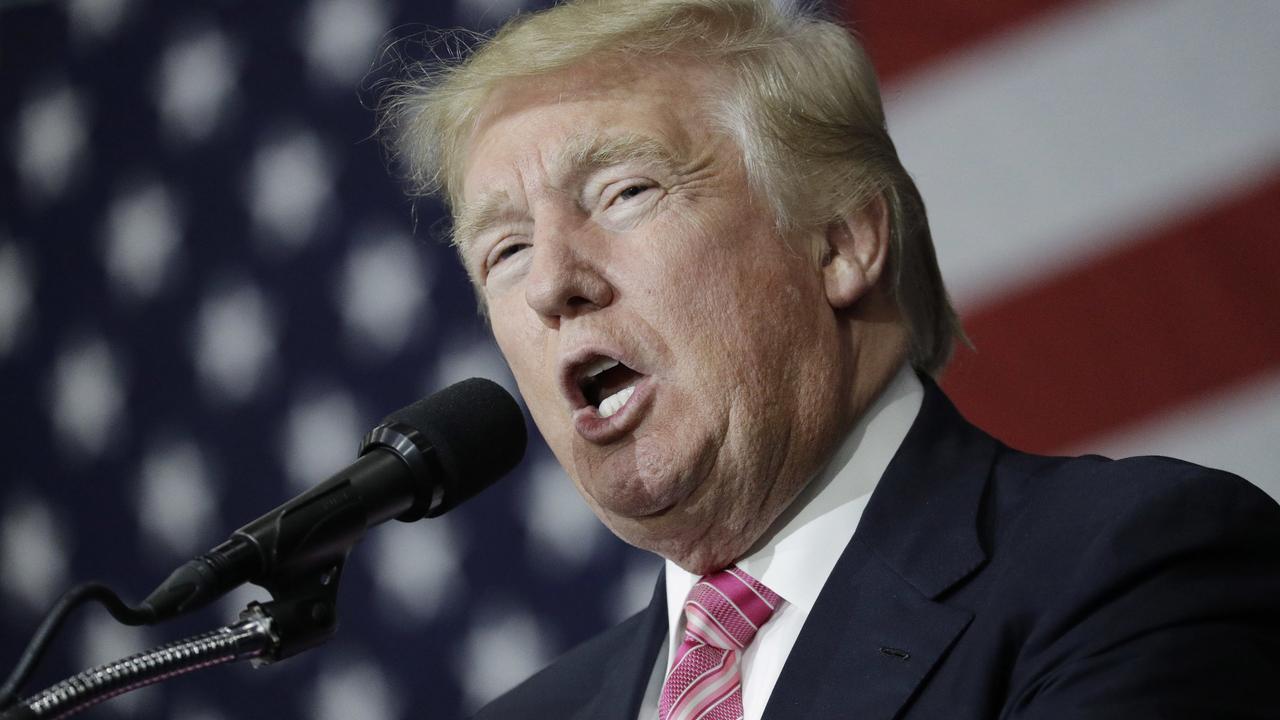Lowe’s message: take a blow on the chin for the economy

Reserve Bank governor Philip Lowe does not see Australia in recession but he admits it is a narrow path to steer the economy back to an inflation rate within the target 2 to 3 per cent band.
If he is to succeed however, most Australians will need to accept something very important. Part of the pain will be worn by them in real wages cuts. If the “inflation mindset” of the public and the market changes – if there is an expectation that inflation might shift to levels of 4 of 5 per cent and stay there – then there is no happy ending for the economy.
On Wednesday evening Dr Lowe heads to Switzerland for a meeting of world central bank governors looking for collective wisdom on how to handle the global crisis.
On Tuesday in a speech at the American Chamber of Commerce, the governor reconfirmed the RBA’s forecast of peak inflation at 7 per cent in the December quarter. The cost of living is going up. But the bank is relying on an entitled Australian public understanding that it has been mollycoddled for the last two years and it now has to cop some of the pain.
When a global pandemic occurs, when one G20 country monsters another, when oil prices rise 28 per cent since February, then Australians need to understand that there are consequences for lifestyles and incomes. But will they? Or will they demand a pay rise to keep pace with inflation?
The governor argues that the country has been cushioned by a pandemic stimulus that has built up $200bn in household savings. Unemployment is the lowest in 50 years at 3.9 per cent, and the participation rate is the highest ever. Interest rates are still very low. And Australia now has the highest ever terms of trade that will boost national income. This should go to pay down debt to add padding for the next crisis.
In an ideal world, Dr Lowe says that inflation sits between 2 and 3 per cent, there are productivity increases of a good 1 per cent and then workers can rightfully demand a wage increase of 3.5 per cent.
But we are not in an ideal world. And to bring inflation back to the 2 to 3 per cent range in the next couple of years there cannot be inflation-linked wage increases across the board. Were that to happen, inflation would run even higher, creating the pernicious spiral that only brings economic doom. “The way to get back to the 2 to 3 per cent range would be a slower economy and slower wages growth to bring inflation down. If the inflation psychology shifts and people start expecting inflation rates in the 3s and 4s and higher then we will have problems,” says Dr Lowe.
Having called for a 5.1 per cent rise in the minimum wage, the government’s position is not to support across-the-board increases to match inflation. What it should be saying is that if that sort of wage increase happens, it will be very bad for people.
Dr Lowe says at present financial markets have confidence and people should have confidence that inflation will come down again. “Higher interest rates while they are uncomfortable for many people are part of that, sending a strong message that inflation will come back down, and we will do what is necessary.”
Internationally, central bank talk falls into two scenarios. The pessimists see that higher inflation will cut into real incomes to a level that crimps household spending, slows the economy and creates higher unemployment. Inflation comes down fast but at a cost. In the UK, incomes are rising at 4 to 5 per cent but inflation will be above 10 per cent.
The optimists see supply-side issues resolving themselves and that the oil price, which is going up at 66 per cent a year, cannot keep rising at that rate.
“That will change the inflation dynamic and households who have built up big buffers will be able to smooth through this period of a hit to their real incomes and inflation can come down without the unemployment rate going up too much,” says Dr Lowe.
The path the bank is hoping to track is the second scenario.
So far he says rate rises have not affected most people. But further rises will shrink buffers, households have higher debt than before and repayments will start to bite. The bank also knows that while the median household has good buffers, some borrowers have very skinny ones.
The RBA and its governor face ongoing criticism from the market and the media over its guidance where its central scenario assumed interest rates were not likely to increase until 2024. That communication could well have given marginal borrowers the confidence to buy property.
On Tuesday the bank released its review into the decision to set a target for the three-year bond yield as part of its pandemic response. The board has agreed to strengthen its scenario analysis and acknowledged that reputational damage occurred from the way the target ended.
Today, the market is pricing in a cash rate of 4.25 per cent by early next year. Dr Lowe disagrees that the market’s view is a result of the way the yield target was managed.
“Current market pricing is for the cash rate to be 4 per cent by the end of this year. We would have to increase rates at 50 basis points at the remaining six meetings for this year and have a 75 basis point jump in there as well. That would have a first-order effect on consumption, mortgage rates, and confidence,” he says. “I don’t think it’s particularly likely but the market has been a better judge than we have over the past few years so you’ve got to pay attention.”
Now the RBA faces a government commissioned external review by a panel of independent experts. Just what that will recommend and whether there is any risk of political influence to the independent body is unclear.
But the bank’s pathway is narrow and its needs Australians to come along.


